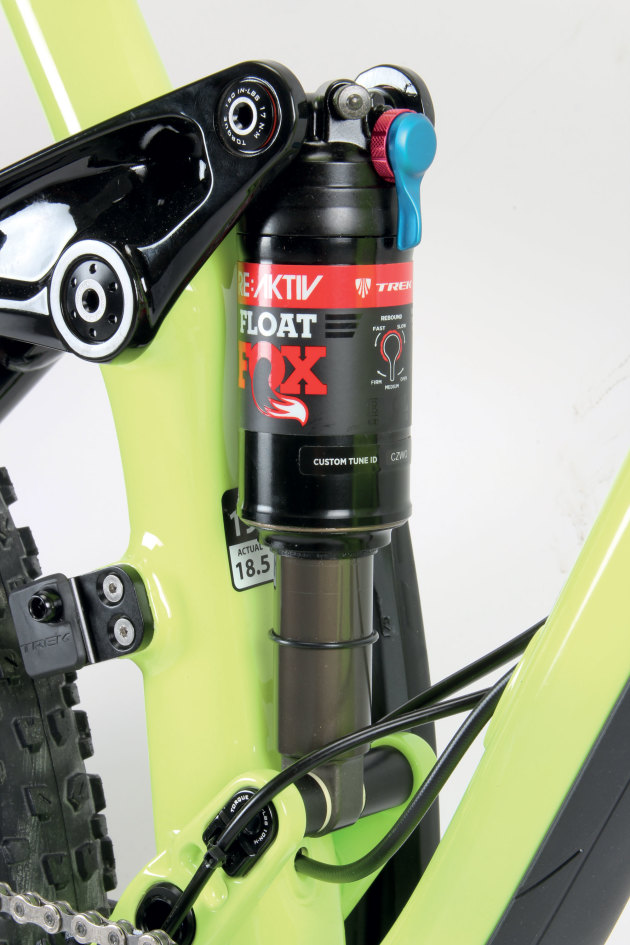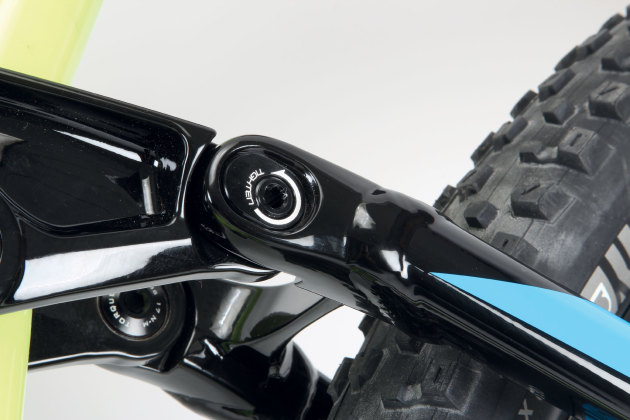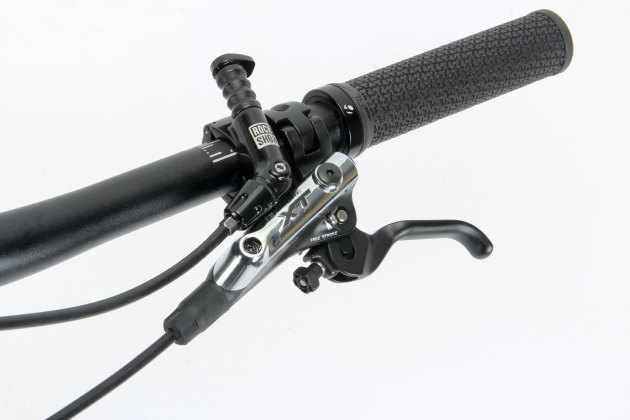Trek Fuel EX9 29er
The Fuel EX series from Trek has lived several different lives. It’s had 26, 27.5 and 29 inch wheels. It has been fitted with regular rear shocks as well as Trek specific DRCV models and now their special Re:Aktiv shocks. It’s had 32mm and 34mm stanchion forks, 1X, 2X and 3X drivetrains, fixed and dropper seatposts, narrow bars and long stem; the list goes on. Slotting in between the race-focused Top Fuel and the all-mountain/enduro Remedy, the Fuel EX has always been Trek’s go-to bike for general trail use, and it has evolved steadily as the desires of MTB riders have changed.
I well remember the first 26-inch Fuel EX; it was a fantastic fast trail bike for chopped out and rocky terrain, with enough legs to get you out of trouble and an attitude intended to keep you on the rivet. Then came the surge of trail oriented 29ers; whilst they were very capable all-day bikes I feel they lost their zest for life—to me they were all business and no pleasure.

Last year the middle wheel size was added to the Fuel EX line up. It went quite some way towards recovering the playful nature of its predecessors and it continues unchanged within 2016 range. The 29er however has had a thorough revamp in an attempt to find that alchemical combination of big wheels and playful temperament.
The 29 inch wheeled Fuel EX is available in four alloy framed variants with prices ranging from $2,299 to $4,799 (our EX9 is the top alloy model). Above that you can get a carbon EX 9.8 for $5,999 and there’s even the option to build yourself a custom Fuel EX through Trek’s Project One program.
Our EX9 test bike sports a 130mm travel Fox Float 34, whilst all other models run 120mm forks to match the rear travel. SRAM supplies the wheels, 1x11 drivetrain and dropper post while the brakes are Shimano XT. In-house Bontrager tyres and cockpit components complete what is a reliable build; there’s nothing you’ll need to change here until things start to wear out. The all-in weight of 12.8kg without pedals (size 19.5) is better than average for a bike of this nature, and the 3,220g frame (including shock) is also on par with the majority of the competition.
Double pass welds give the frame a smoother look and the water bottle mounts inside the frame will be greatly appreciated by those who don’t always want to ride with a pack. It also features a removable front derailleur mount and unique under the top tube cable guides should you feel the need to add an extra chainring. New ‘Control Freak’ internal cable routing for the rear derailleur and dropper post keep things looking clean while allowing a few different cable setup options, although the ports aren’t overly large so cable swaps will be a little fiddly. The rear brake hose is run externally on top of the down tube, and we’re totally fine with that. It’s also nice to see plenty of clearance for tyres up to 2.4 inches wide inside the rear triangle—a trail bike needs room for trail-worthy tyres, not just pizza cutters.

Ongoing Evolution
There are a few other changes to the 29er Fuel EX range for 2016, and whilst in isolation they might not seem like much, the net result is quite significant. The EX8 and EX9 (in both wheel sizes) come with Trek’s Re:Aktiv damper instead of the previous DRCV shock. This was released on a few select models last year and it’s good to see this technology finding its way onto more bikes. It certainly works well and in most terrain allows you to set the shock up for your weight and then leave it completely alone.
All of the 29-inch models from the EX8 and up also get the new Boost hub ‘standard’. Pushing the rear dropouts out to 148mm and the front to 110mm allows for wider spaced hub flanges, and hence wider spoke bracing angle, to offset the inherent flex of the larger wheels. The Boost system also shifts the chainring an additional 3mm from the centre line, creating a little extra tyre clearance and allowing Trek to tuck the wheels in closer to the bottom bracket. As a result, the chainstays have gone from 452mm to a much more playful 437mm—almost as short as the 27.5 wheeled EX models. At the same time, the bottom bracket has been lowered by a few millimetres and the reach was increased by a similar amount.

Whilst the head angle is still on the steeper side (68.8-degrees in the slack setting), all of the other changes combine to create a bike that doesn’t feel as twitchy as the head angle alone might have you believe and the significantly shorter back end makes it a lot easier to get your weight back when things get steep or chunky. Remember, though, that these changes only apply to the $3,499 Fuel EX8 and above; the lower spec models continue with the older numbers for a very effective but potentially uninspiring and XC-biased ride.
The other obvious change, which I’ve already touched upon, is the new suspension from Fox. This was my first taste of the new Fox 34, and I like it a lot. I’ll save the details for our stand-alone review on page 42, but suffice to say that the RockShox Pike is no longer the only serious contender for the top spot in the mid-sized fork market, and the 34 undercuts the Pike’s weight by around 85 grams. At the back end, the new EVOL air can with its larger negative spring provides a similar feel to the previous DRCV shock; supple off the top, plenty of support in the mid-stroke and enough progression to keep it from smacking the bump stop on all but the most foolhardy drops.
The Re:Aktiv damper, developed in conjunction with motorsport legends Penske Racing, is a great bit of technology. When switched to the middle or firm damper settings, it provides a noticeable pedalling platform, but with a faster and more complete ‘blow off’ than seemingly similar dampers from other brands. Initially I set the rear shock with about 25% sag and found that for my tastes (I like my suspension supple) the middle setting felt a bit too firm and I still wasn’t using all the travel on descents. Once I dropped the shock pressure to allow 30% sag, the Fuel EX9 really hit the sweet spot. In the open mode it was very smooth and responsive without wallowing or excessive bottom out, while the middle setting was more of a set and forget mode for everything but the roughest descents. It’s a great combination; you can run low air pressure for plenty of sag to keep the rear wheel glued to the ground and let the damper control unwanted movement caused by the rider’s weight and pedalling motion.

On the Gas
The definition of a trail bike is a tricky one. Depending on where and how you ride, it could potentially cover anything from marathon riding to rock and root riddled natural terrain—both with and against gravity. For some it may even include intermediate jump trails at a bike park. That’s a lot of variation to cover and getting the mix just right is no mean feat. For a major brand like Trek, who also have dedicated XC race bikes and enduro rigs, it’s also difficult to avoid crossover with adjacent models in the range. With the new Fuel EX9 29er, I have to say I think they’ve got the balance just about perfect; it’ll do all of the things you’d expect from a bike of its type, and it does it all very well.
Combined with the lower bottom bracket and longer top tube, the seemingly steep head angle works to provide quick steering for switchbacks and tight tree-lined trails whilst providing enough stability at speed downhill to keep you from going ‘OTB’ at the sight of the first step down. Most noticeably though, the Fuel EX9 puts the fun back into big wheels, thanks in no small part to the 15mm Trek have lopped off the back end. Short chainstays invariably make a bike easier to manual and jump whilst adding a flickable, playful nature to the ride quality, and the EX9 has those traits aplenty. It still has the slightly slower turn-in inherent to the bigger wheels, but otherwise you could easily forget you’re on a 29er.

Trek claims they developed the wider Boost hub standard specifically to address the issue of chainstay length and clearance on 29ers. We’re not going to swallow that line completely, because we’ve previously seen other companies make similar travel 29ers with chainstays down to 430mm, but there’s no question that the Boost spacing makes it significantly easier. Like many of you, I’m not a fan of the constantly changing ‘standards’ (there’s a misnomer if ever there was one) that we’re seeing at the moment, but I suspect Boost is here to stay. As a result, you won’t be faced with any real shortage of options if you wanted to replace the stock wheels. There are too many variables to be able to subjectively say that the wider spacing improves stiffness, but the logic is completely sound and Trek’s claims of objectively measuring improvements in this area seem totally reasonable.
Getting back on track, the Fuel EX is a nimble and capable climber whether the trail is smooth or rough, and it eats up sweeping turns and fast berms for breakfast. Pedalling efficiency is great in the middle or firm settings thanks to the fancy shock damper, but even in the open setting it’ll still get along without excessive pedal bob. Should you choose to replace the stock 32-tooth chainring for a 30T (as many riders do on 29ers), its pedalling manners will only improve further. As we’ve come to expect from Trek’s ABP suspension design, it also remains very active over uneven ground, whether you’re cranking, coasting or throwing out the anchors.

The 750mm wide handlebar gives plenty of leverage over the big front wheel when you need it to change direction quickly, and although the 70mm stem might seem long given the current trend for super-stubby stems, it does help to keep weight on the front wheel for added traction when on the flat and keeps the front wheel tracking on steep climbs. I’ve said it before, but the latest tyres from Bontrager have been excellent, and the XR3s as spec’d are no exception. They offer a great combination of fast rolling and reasonable traction in most circumstances, although aggressive riders might want something meatier up front.
Gripes? Precious few really. It still irks me that a bike with a 1X drivetrain and a Reverb seatpost doesn’t come standard with the remote mounted under the bar on the left where it belongs, and whilst the Roam wheels have proven reliable and easy to live with, their narrow width means you can’t run lower tyre pressures without the risk of rolling a tyre off the rim or burping air. I’d also be a little concerned that the shorter fork on all other Fuel EX 29er models might put its bias a little too far to the XC spectrum, which is something to bear in mind if you ride steep, rough and fast trails. Other than that, there really isn’t anything to complain about.
If the definition of a modern trail bike is something that you could take to just about anywhere and ride everything bar full-on DH territory, then the new Fuel EX9 29er ticks all the boxes. If you want to race, the Top Fuel is a better choice; likewise if you grind your way uphill purely for the downs you’d be better off with a Remedy or Slash. If you fit somewhere in between those two, the EX definitely deserves a very hard look. The updated geometry and suspension, especially on the longer-forked EX9, make for a bike which is extremely versatile, and most importantly the Fuel has rediscovered its spark. The vast majority of us don’t ride for medals or prize money, we ride for fun; and the 2016 EX9 is a very fun and capable bike.

Thumbs Up
Fun all-rounder
Excellent suspension
Well considered component choice
Thumbs Down
Wider rims would be nice
Dropper remote would be better off underneath the handlebar

Specifications
Frame: Alpha Platinum Aluminium
Shock: Fox Performance Float EVOL 120mm Travel
Fork: Fox Performance 34 Float, FIT4 130mm travel
Headset: FSA E2 sealed cartridge
Handlebars: Bontrager Race Lite Alloy 750mm
Stem: Bontrager Rhythm Comp 70mm
Shifter: SRAM X1
Front Derailleur: N/A
Rear Derailleur: SRAM X1
Cassette: SRAM XG-1150, 10/42 11-speed
Chain: SRAM PC1130
Cranks: SRAM X1 32 tooth
Bottom Bracket: SRAM GXP
Pedals: N/A
Brakes: Shimano XT
Wheels: SRAM Roam 30
Tyres: Bontrager XR3 Expert
Saddle: Bontrager Evoke 2
Seatpost: RockShox Reverb Stealth
Weight: 12.8kg without pedals (19.5 frame 3,220g)
Available Sizes: 15.5, 17.5, 18.5, 19.5 (tested), 21.5 and 23-inch
Price: $4,799
Distributor Trek Bicycles Australia www.trekbikes.com












